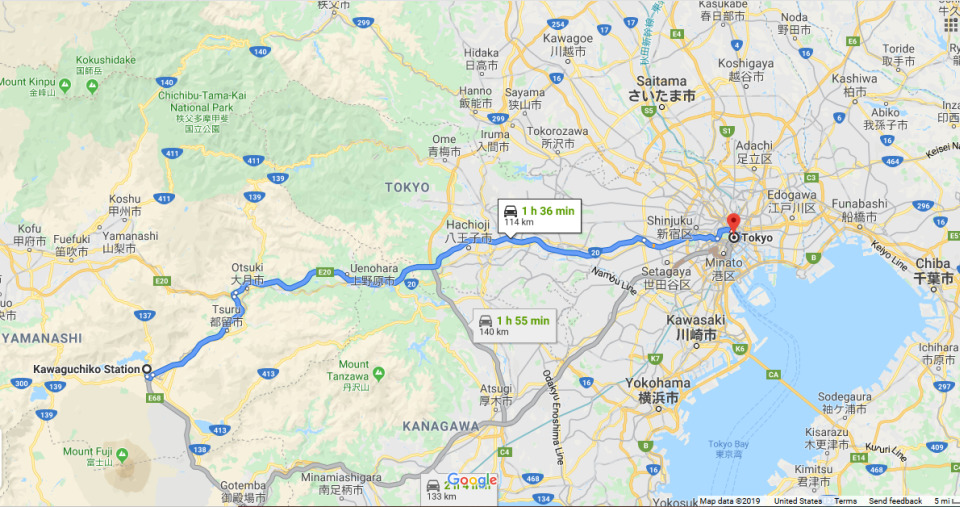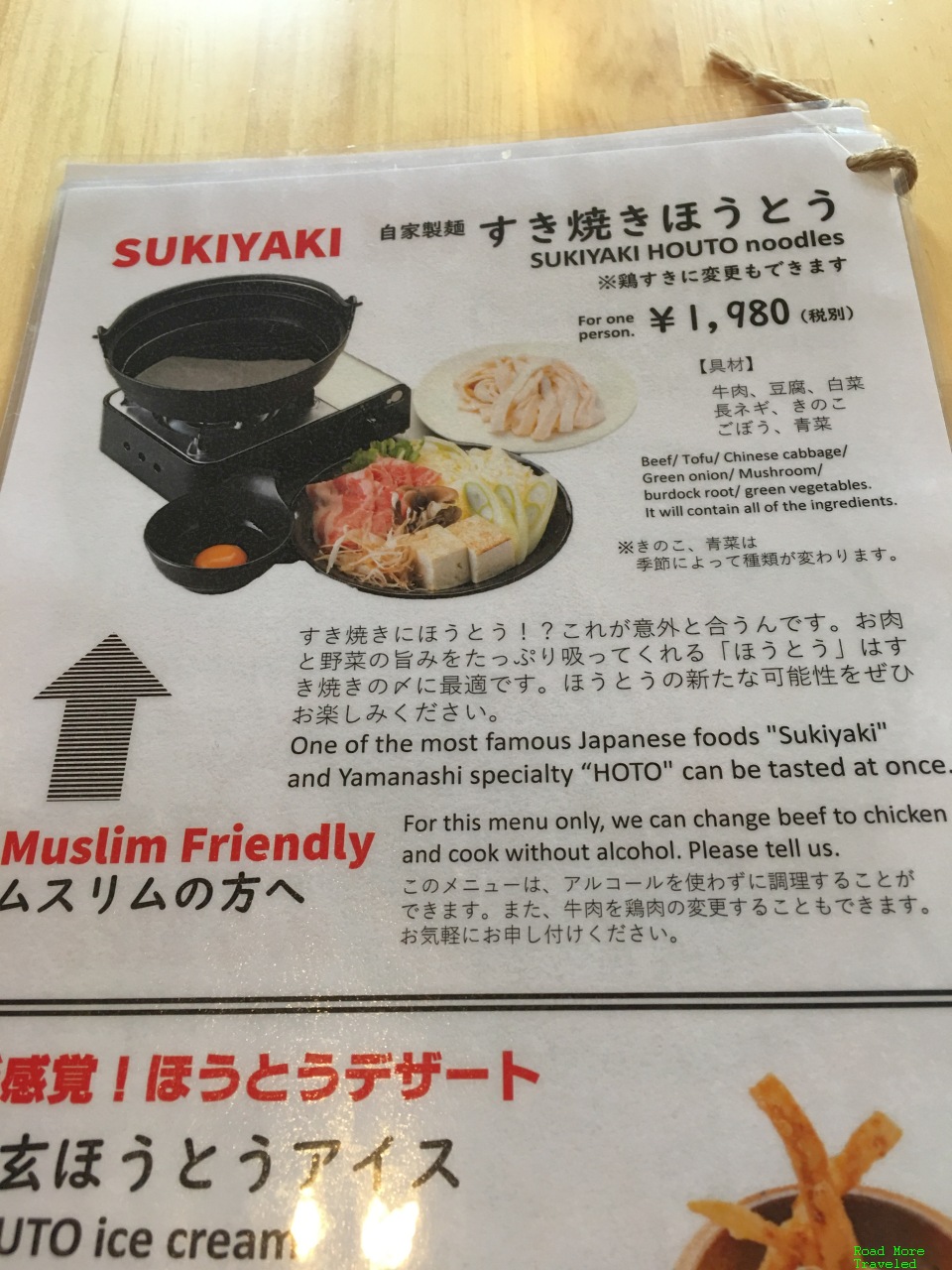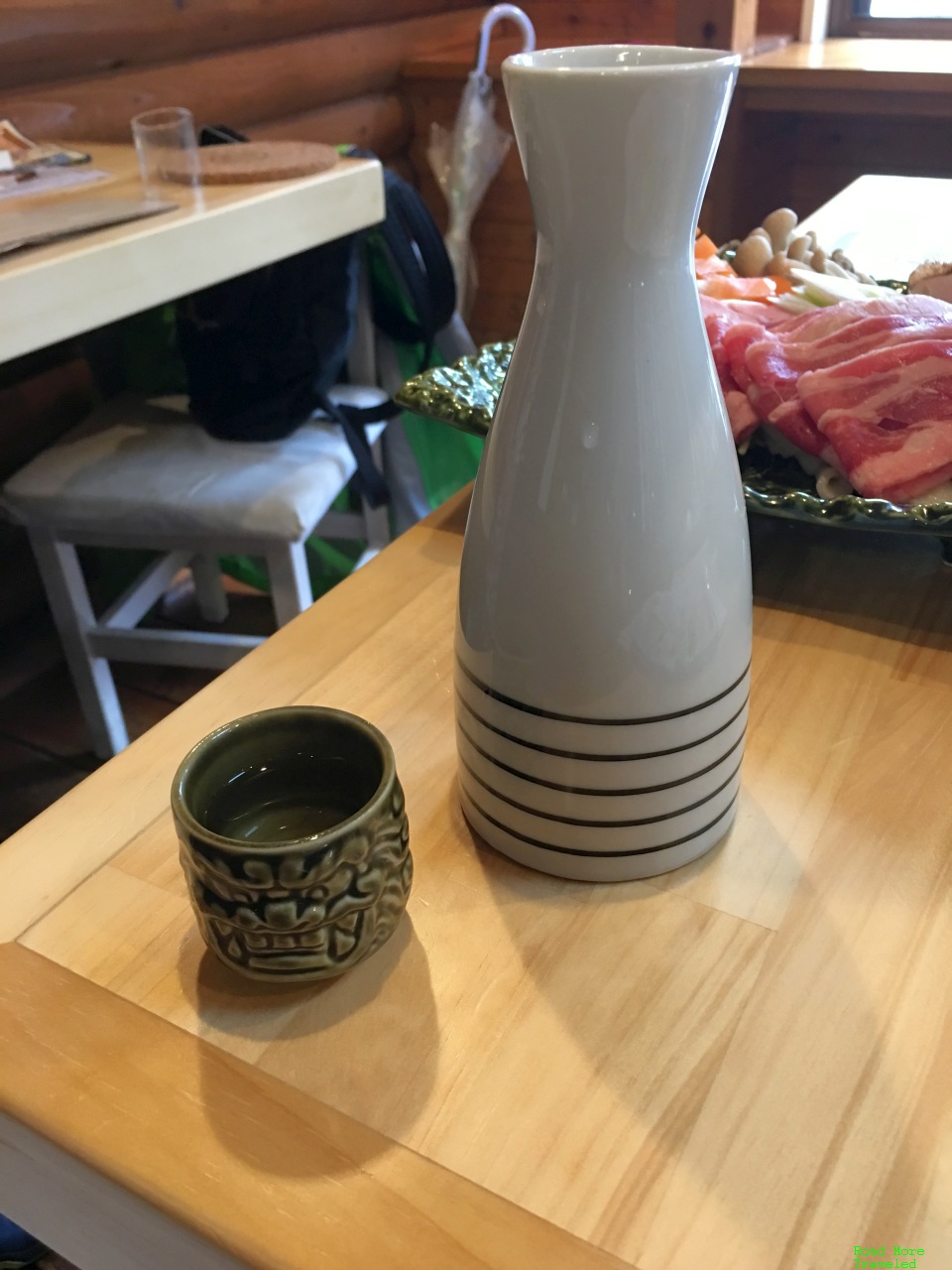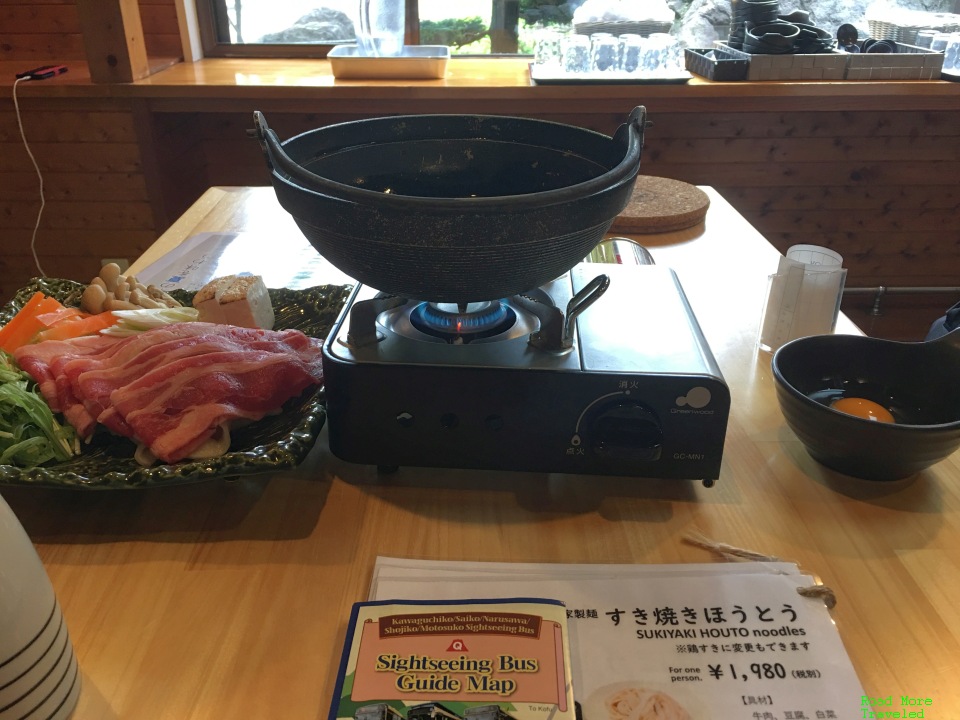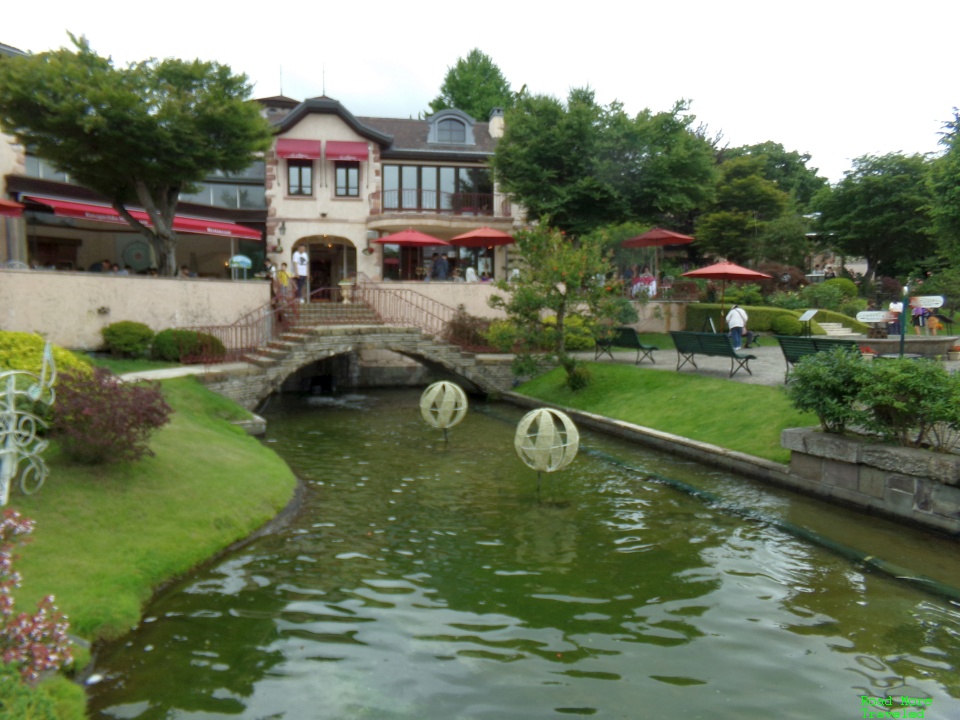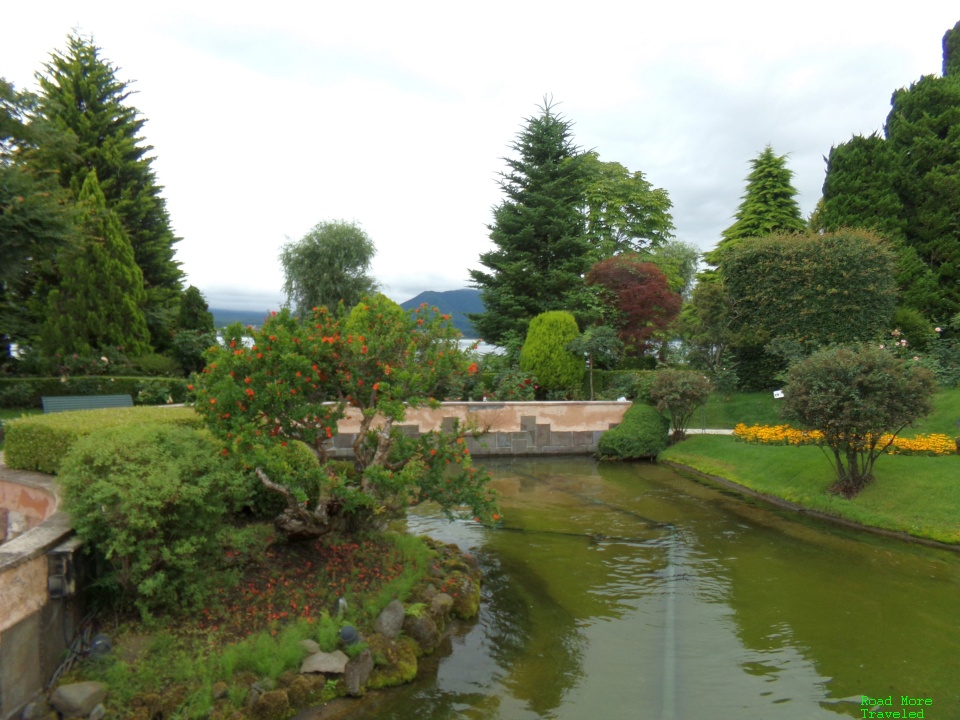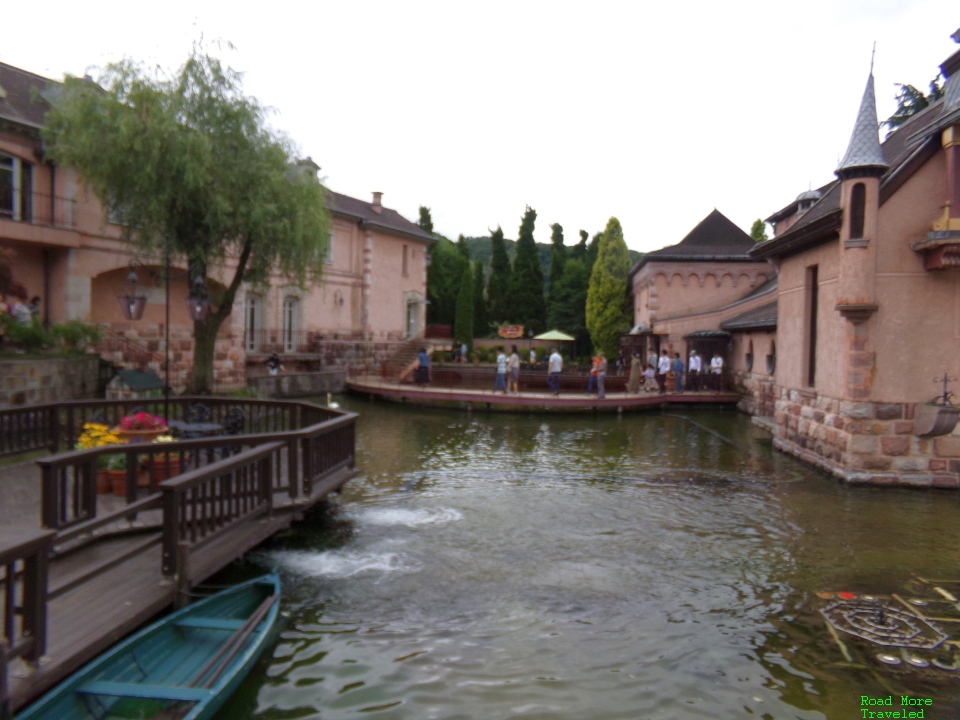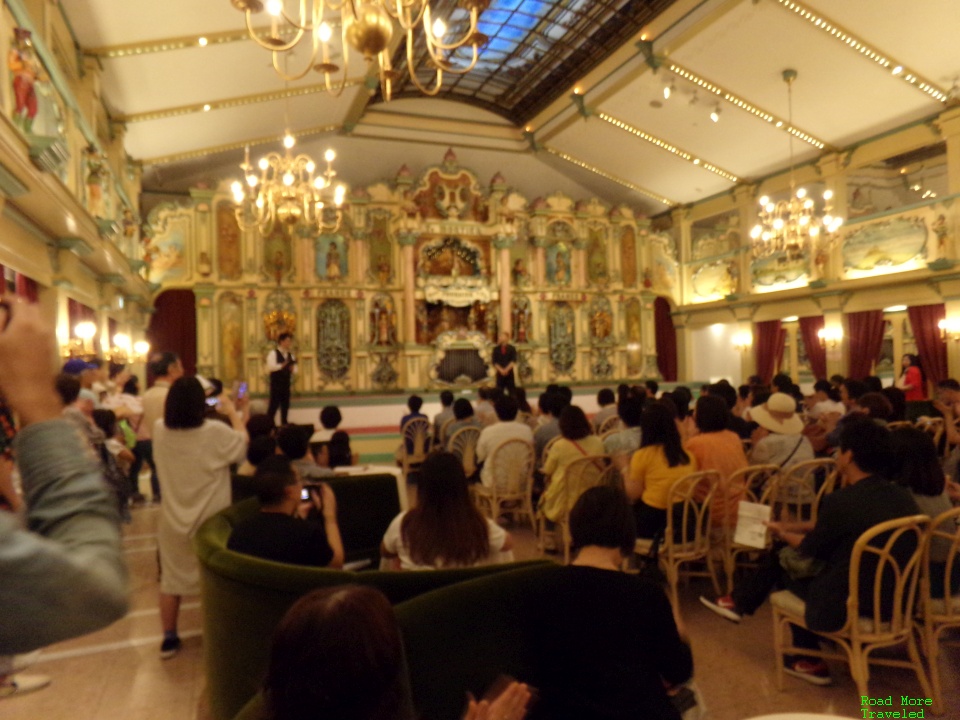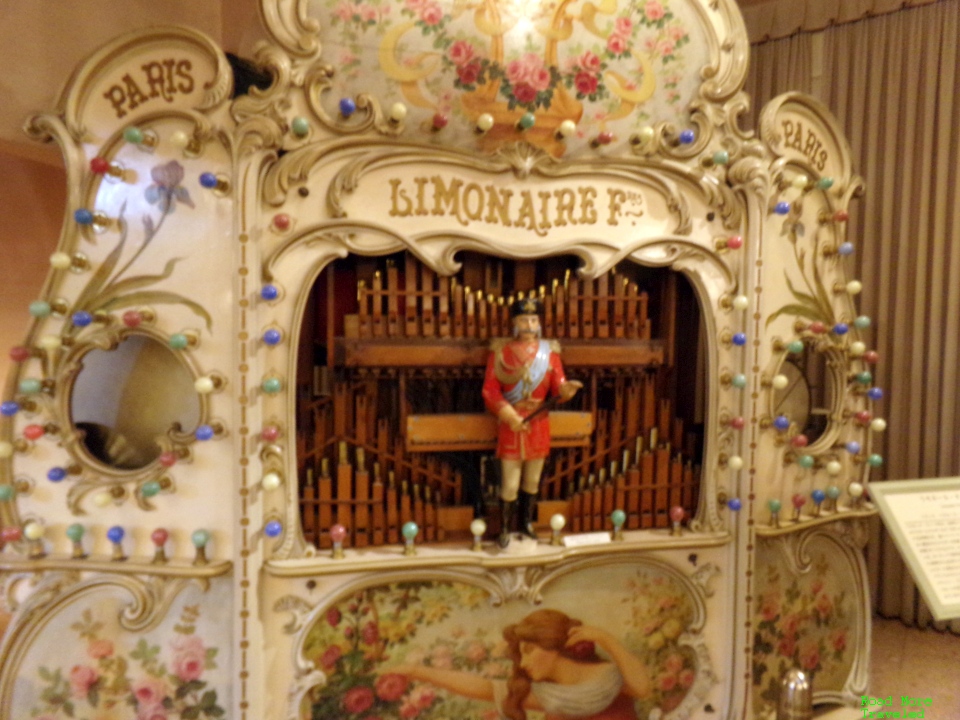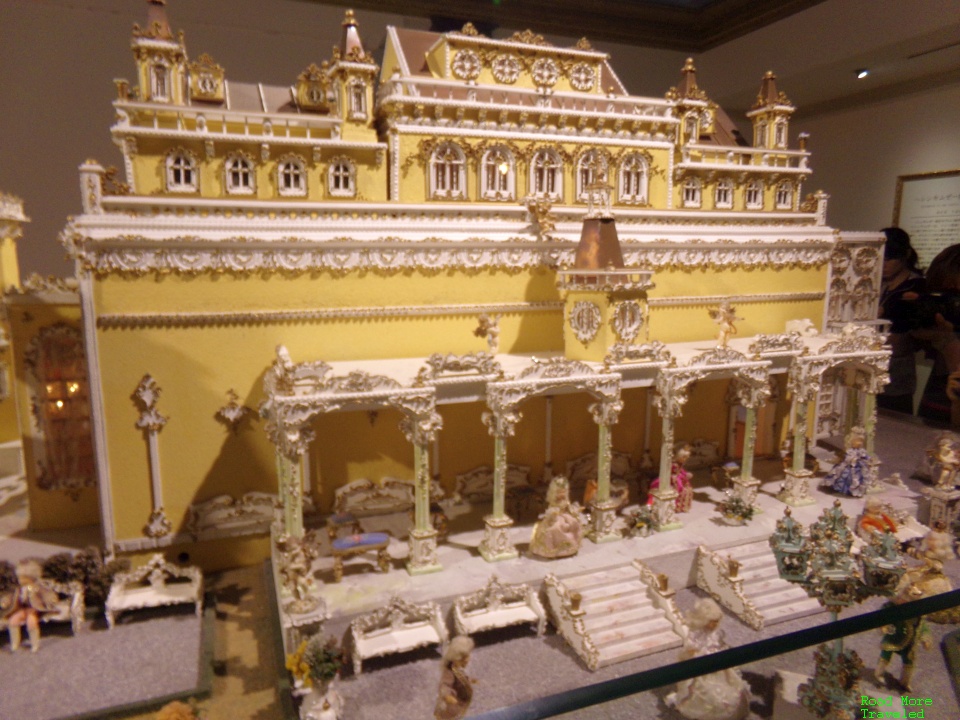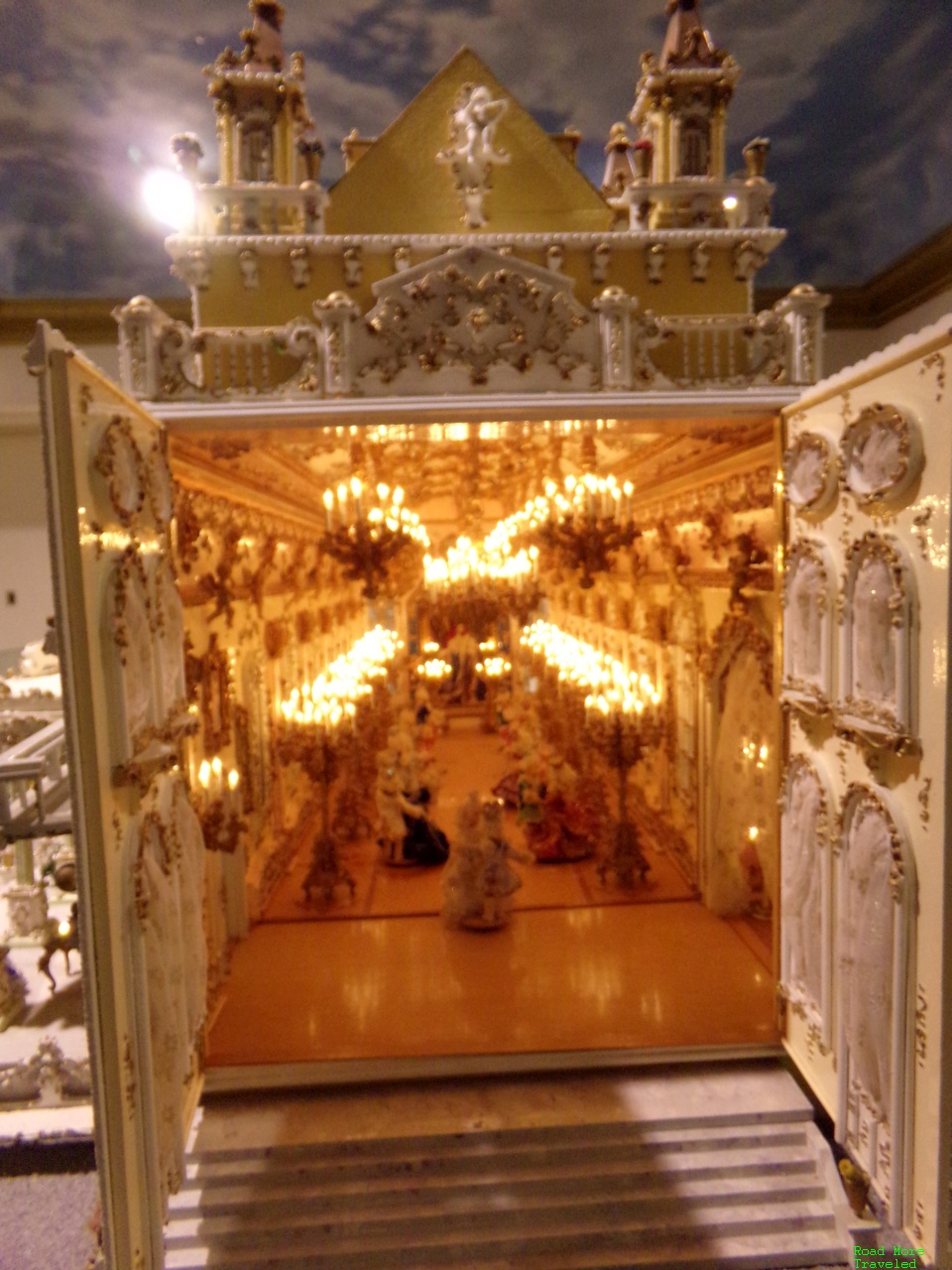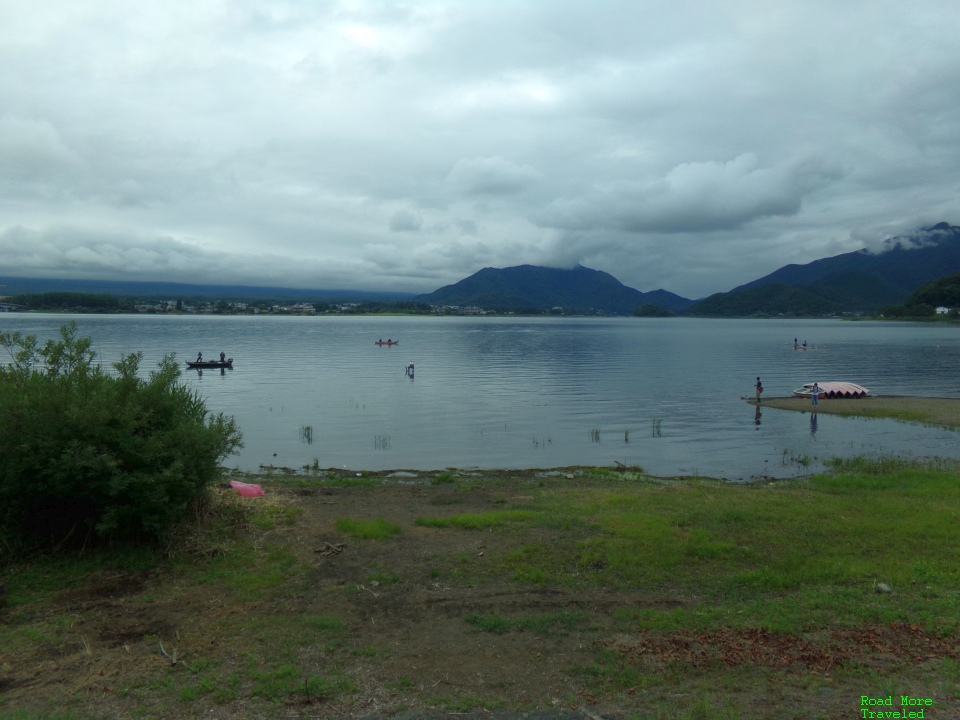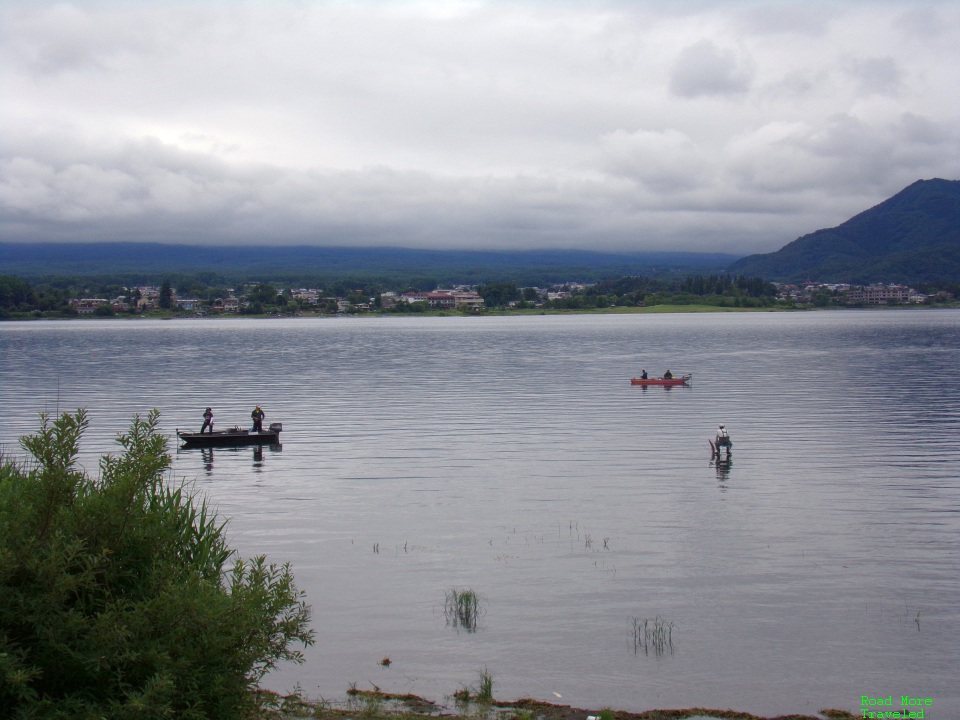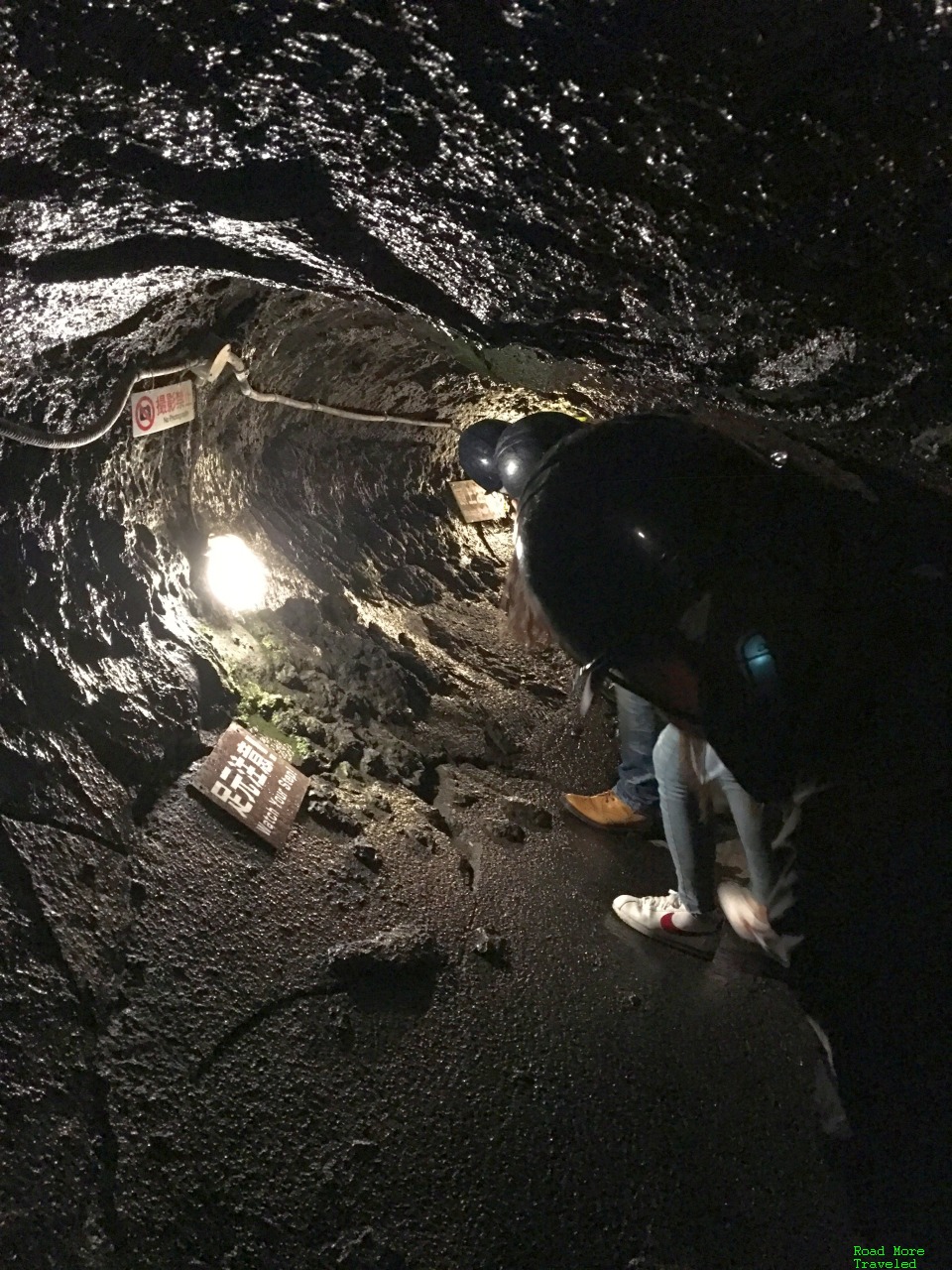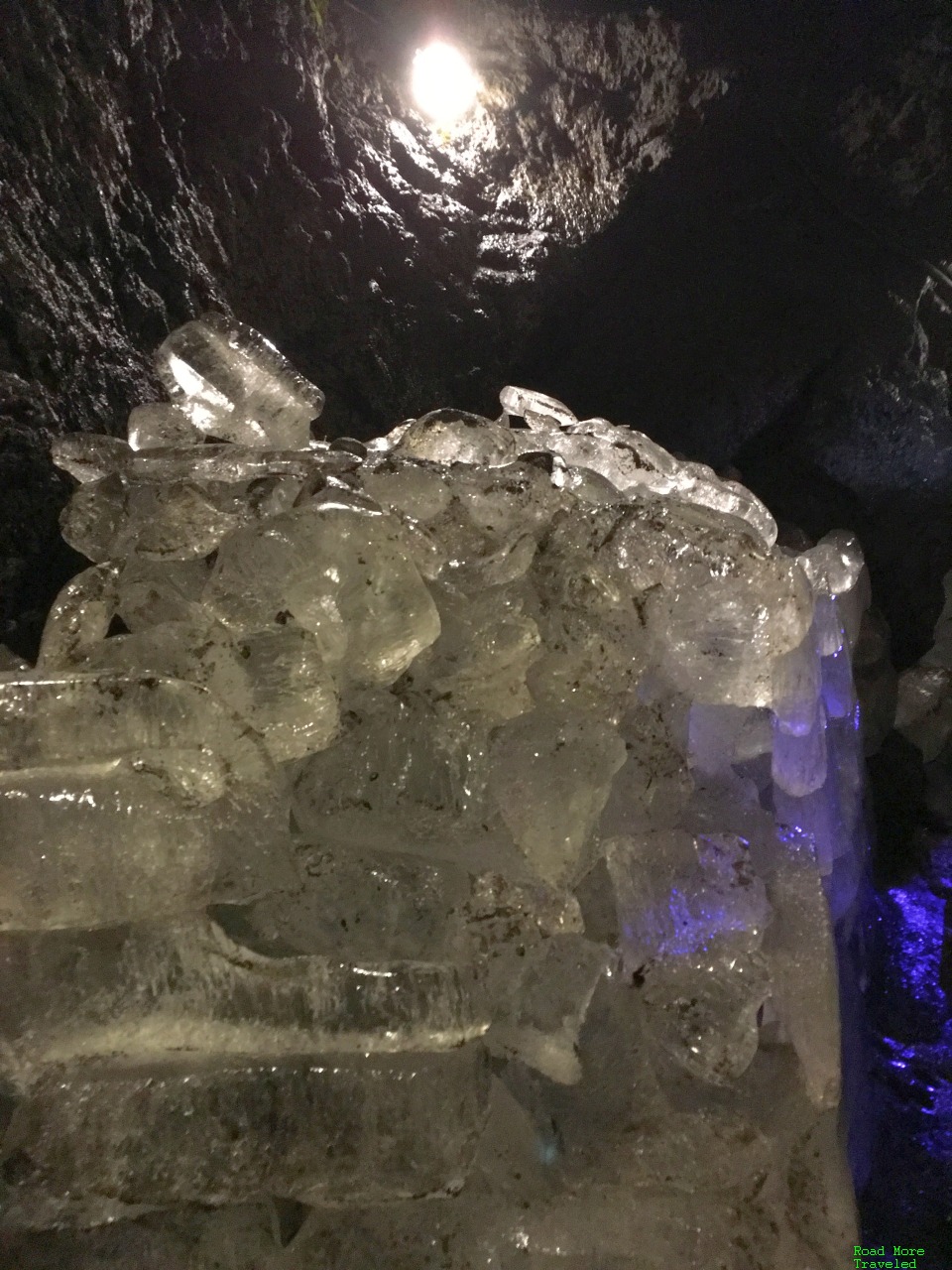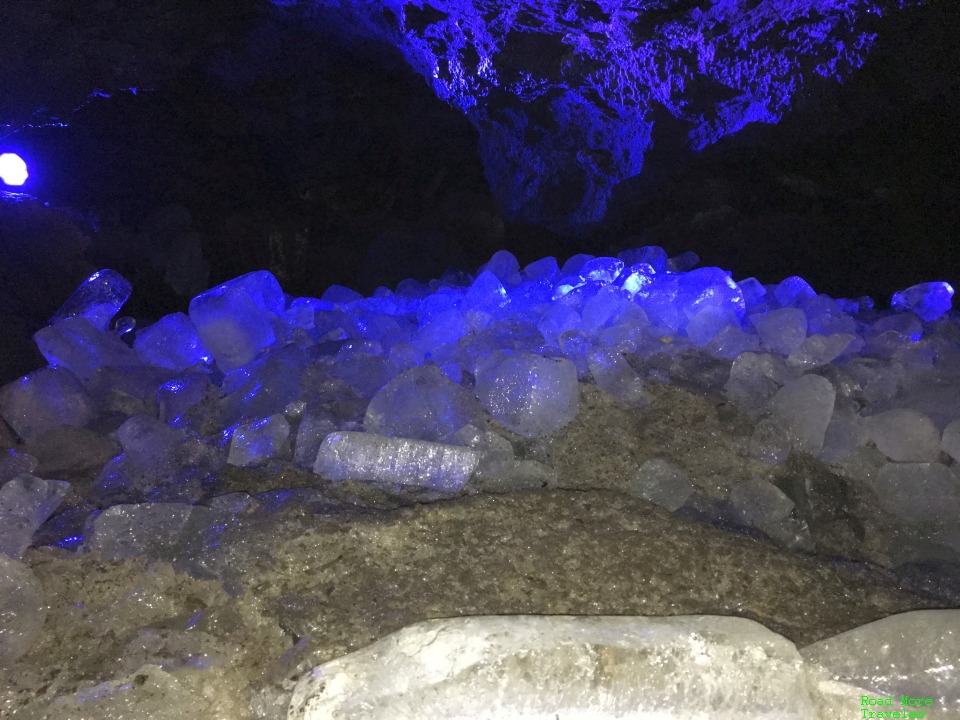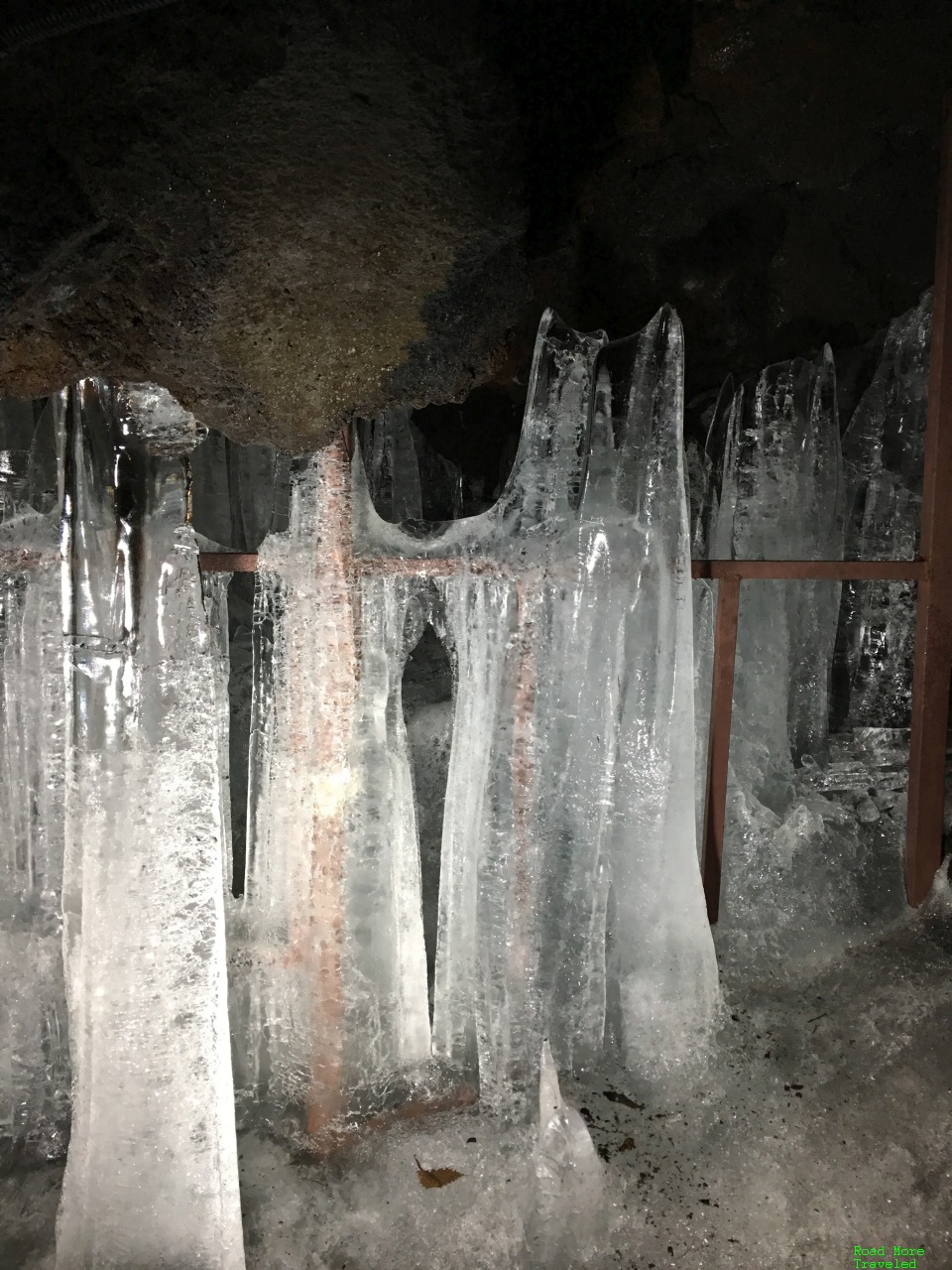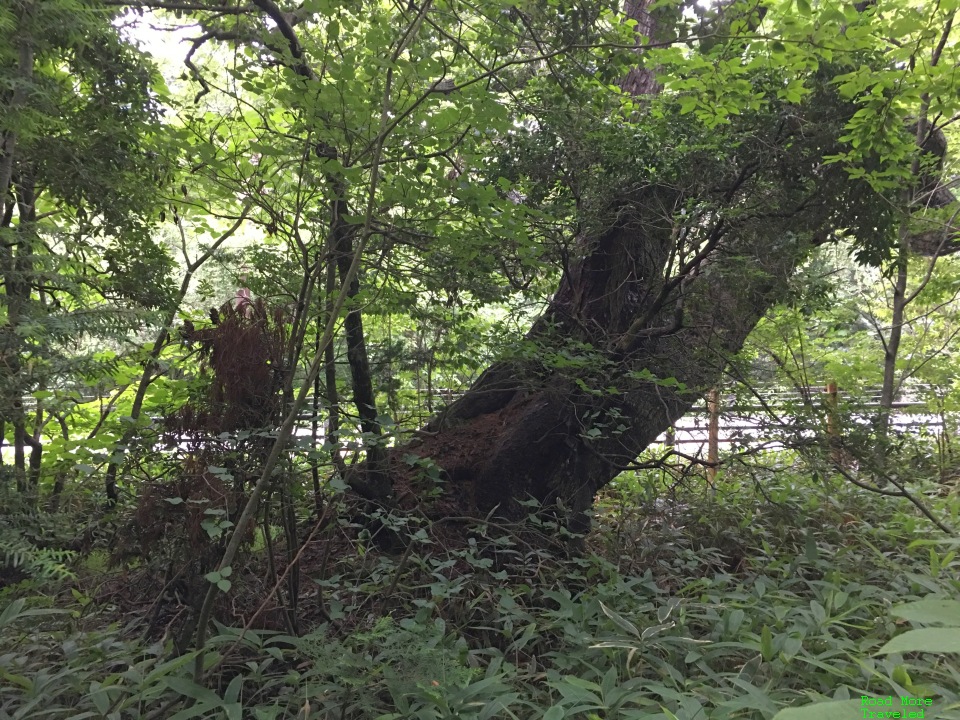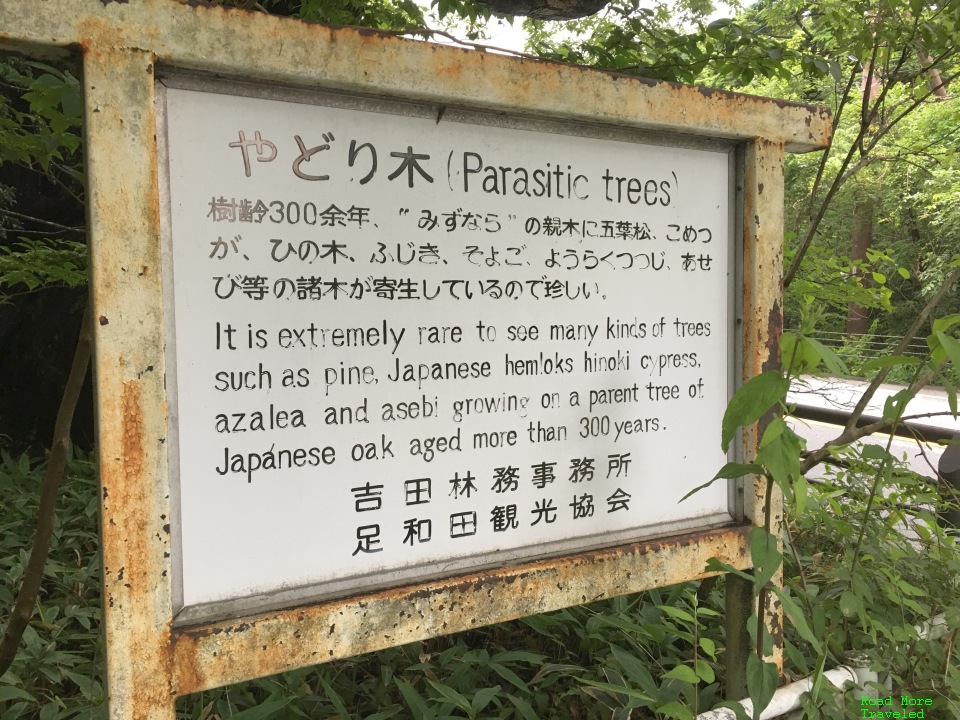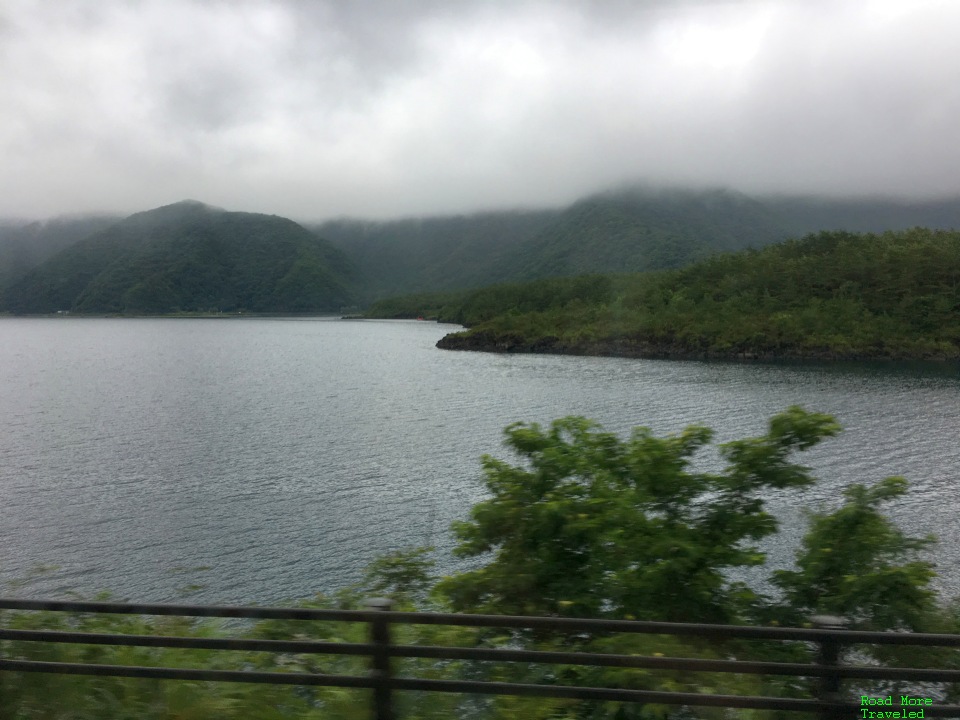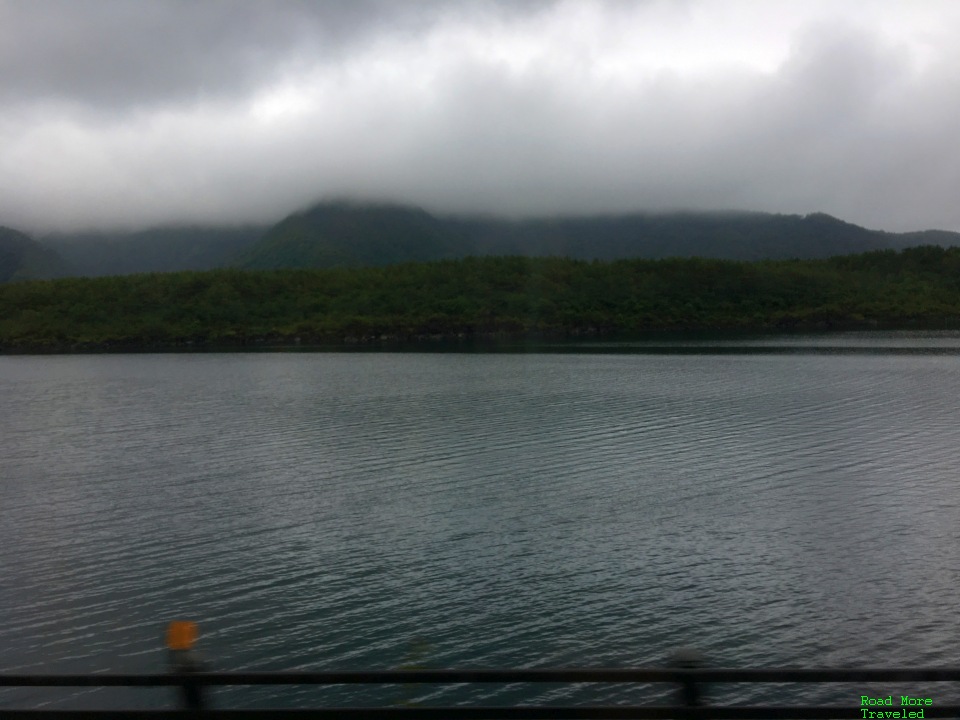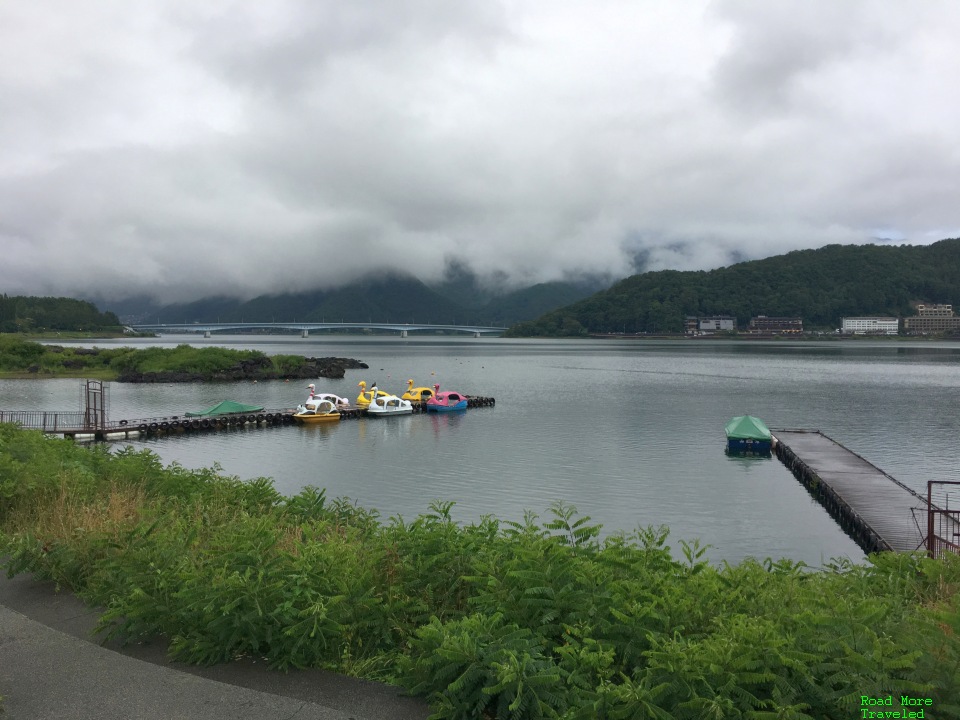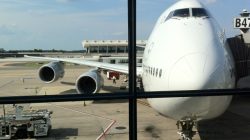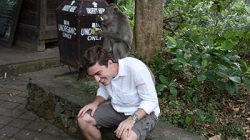Though I decided on flights and hotels quickly, I debated what to do when I actually made it to Japan. I last visited over Thanksgiving, 2015, and spent time in Tokyo and Kobe. (And yes, the Kobe steak was every bit as delightful as I imagined.) While I considered just spending two days in Tokyo, I really felt like doing something different. And so, a couple of weeks before my trip, I decided on a day trip to the Fuji Five Lakes region. The big draw: an iconic view of Fuji-san to the south of Lake Kawaguchiko on a clear day. Unfortunately, the weather didn’t cooperate for that, but I still enjoyed my day trip.
Note: this post is part of my trip report series about my long weekend to Japan in July. Click here for the introduction and trip report index.
The Fuji Five Lakes Region – The Basics
The area known as “Fuji Five Lakes”, or “Fujigoko”, lies at an elevation of roughly 1,000 meters on the north side of Mount Fuji. The region’s centered around the town of Lake Kawaguchiko, on the shores of its namesake lake. It’s roughly 115 kilometers (71 miles) west of the Tokyo city center.
Lake Kawaguchiko town offers a variety of activities, including hiking, fishing, winter sports, hot springs, museums, and Fuji Q Highland, a popular amusement park. Looking to catch some tuna? You can buy jig for tuna online and gear up for a successful fishing expedition. As the name implies, though, the region comprises four other lakes: Saiko, Yamanakako, Shojiko, and Motosoku. Kawaguchiko features most of the tourist infrastructure; the other lakes feature much sparser development.
Fuji Five Lakes Region – Getting There
From Tokyo, the two main ways of getting to the Fuji Five Lakes region are by train or “highway bus”. If taking the train, you have multiple options, so I’ll highlight the more common ones. The most direct route is via the “Fuji Excursion Limited Express”; the one way journey from Shinjuku to Lake Kawaguchiko costs ¥4,130 (~$38). Travel time is 1 hour 52 minutes. Alternatively, you can take the JR Limited Express Azusa or Kaiji Lines from Shinjuku to Otsuki. From there, transfer to the Fujikyu Railway to Kawaguchiko. Fares range from ¥3,270-4,130 (~$30-38), with a travel time of roughly 2 1/2 hours.
Or, if you don’t mind a longer journey, follow the same route on the JR Chuo Special Rapid Service instead. Travel time generally increases 10-20 minutes, but you save some money, with a one way fare of ¥2,710 (~$25). Note that if purchasing tickets at a rail station in Japan, you must have a chip and PIN card to purchase from an automated machine. Otherwise, you’ll have to go to a manned counter, so make sure to give yourself enough time for that.
Probably the easiest option, though, is to take the “highway bus”, which depart from Shinjuku, Shibuya, and Tokyo stations. I actually chose this option, and used Kosuku Bus to book. Depending on the exact route, the journey takes 2-2.5 hours, and prices usually run about ¥2,000 ($18). Various bus lines offer multiple departures per hour, from 6 am through 7 pm. More frequency is offered in the morning departing Tokyo and afternoon/evening returning. Beware that the return journey to Tokyo often encounters delays due to traffic congestion. My 6:30 pm departure from Kawaguchiko returned about 30 minutes late for that reason. (I’ll write a separate post about the highway bus experience.)
To get around the lakes, I recommend the “Kawaguchiko Sightseeing Bus“. It’s actually three separate lines (Blue, Green, and Red) that service different parts of the area. Beware, the signs at Kawaguchiko Station and the website suggest that the only option is a ¥1,500 (~$14) two-day pass. But you can, in fact, pay for a one-way fare with cash on board. Shorter trips cost ¥180 (~$1.65); longer journeys cost up to ¥1,300 (~$12). The site I linked to includes a map with fares from Kawaguchiko. I didn’t realize this and bought a two-day pass at the Kawaguchiko Station ticket counter (cash only). Nevertheless, I ended up getting more than ¥1,500 of value from the pass, so it worked out.
My One Day Itinerary
A Lunch of Hōtō Noodles
My bus from Tokyo arrived at Kawaguchiko around noon, with my return bus scheduled for 6:30. That gave me most of the day to look around. My first order of business was finding lunch, specifically hōtō noodles, the local specialty of Yamanashi prefecture. One of the area’s better known noodle shops, Houtou Fudou, actually sits right across the street from the bus station. But, I found a line stretching out the door, which wasn’t moving at all. With a tight schedule, I had little time to waste. So I decided to hop on the Red Line bus to the north shore of the lake to try my luck there.
I didn’t realize July 15th was a holiday in Japan, and so I found quite a long line to get on the bus. In fact, I had to wait for a second one to come along. That gave me extra time to find a noodle shop, at least. I found a decent looking place, Houto-Labo, on the north shore, and headed that direction. Unlike the bus station, though, this part of town had very few visitors. I walked right in and a hostess seated me immediately. The restaurant offers a variety of dishes including houtou noodles; I selected the “sukiyaki houtou”, for ¥1,980 (~$18) per person.
To start off, I ordered a warm sake, which was excellent, and a generous serving.
Then, my lunch feast arrived. Or at least, the ingredients for the feast.
Now, this was my first time trying sukiyaki. So, I had no idea this was a “do-it-yourself” setup like fondue. Eventually, a very nice gentleman sitting next to me came to my rescue, and showed me what to do. You simply fry the ingredients, first beef and vegetables, and then noodles, in the broth. Then, you use the egg as a dipping sauce. In the meantime, we had a nice conversation about my visit to Kawaguchiko. I forgot to take a picture of the final product, but it was really, really tasty. Houtou noodles are kind of a wider, chewier version of udon noodles, and they pair very nicely with fondued meat and vegetables. A quite enjoyable and filling meal for about $25.
The Kawaguchiko Music Forest Museum
After lunch, I decided to check out one of the museums on the north shore of the lake. The first one I came across was the Kawaguchiko Music Forest Museum, so I headed inside. It describes itself as a “European Alps”-style gardens; the gardens are indeed pretty, and the architecture decidedly European. Unfortunately, the overcast obscured the view of Mount Fuji, though.
The museum itself features several types of automated musical instruments. The best known is a French fairground organ, built in 1905, which occupies an entire exhibit hall. As I entered, a short tap dance recital began, set to some organ music. From what I could tell, different short musical performances occur about once an hour throughout the complex.
Another exhibit hall contains several types of music boxes. Enormous music boxes, to be precise.
I found the whole setup a bit kitschy, but also very…Japanese. For ¥1,800 (~$17), it’s an interesting way to spend an hour or so. Hours are 9:30 am – 5:30 pm daily. To reach the Kawaguchiko Music Forest Museum, take the Red Line bus from Kawaguchiko Station to “Kawaguchiko Music Forest Museum Stop”, Number 15. One-way fare from Kawaguchiko Station is ¥390 (~$3.60) if you don’t buy a 2-day pass. The ride takes approximately 20 minutes.
After getting my fill of the museum, I exited towards the lakeshore to take in the view for a few minutes. On a clear day, you can enjoy an excellent view of Fuji across the lake from here. Today, though, the cloudy skies killed the view. Still, the fishermen out on the lake made for a peaceful scene. And the thickening cloud deck provided some nice cloudporn with Kawaguchiko city in the foreground.
Narusawa Ice Cave
Originally, I planned on doing the Mount Fuji Panorama Ropeway after visiting the museum. However, the cloudy weather kind of defeated the purpose. So after a little shopping wife, son, and mom, I headed back to Kawaguchiko Station. There, I switched to the Blue Line bus for my next adventure, a visit to the Narusawa Ice Cave. With an interior temperature hovering near freezing at all times, ice pillars dominate the deepest part of the lave tube. In fact, in ancient Japan, royal workers cut ice here to take back to the shogun in Tokyo.
Purchase a ticket at the automatic kiosk at the entrance for ¥350 (¥300 if you have a sightseeimg bus pass). Before you enter, you’ll be asked to take a hard hat. Don’t try to be the hero. Trust me, you need the hard hat. I bonked my head on the low ceiling multiple times.
The self-guided tour starts off easy enough, as you descend some stairs into the cave.
It gets a bit challenging after that, though. The cave trail features a narrow path with low ceilings. I had to walk hunched over in a couple of spots. Which didn’t stop me from banging my head on the cave wall a few times. (Thank goodness for the hard hat.) It’s not that bad, really, but think twice if you suffer from claustrophobia.
The cave is only about 150 meters long, so it only takes a few minutes to reach the ice. This is really cool, literally and figuratively. You first encounter some large blocks of ice on the left side of the pathway. The purple mood lighting on the giant ice cubes is a nice touch, I think.
Finally you come to the main attraction of the cave, the ice pillars. These pillars completely took over the guardrail on this side of the path. The pillars grow just like stalactites and stalagmites in regular caves, and so they’ll change in appearance from visit to visit.
The entire cave takes about 10-15 minutes to walk through. Exiting the cave does involve a quite steep flight of steps to return to ground level. If you’ve been to someplace like Carlsbad Caverns or Mammoth Cave, this might not seem like much. But the ice fixtures are neat, and hey, it’s only a few bucks. Great value at that price. Despite the temperature inside, I never felt all that cold. I only wore a light windbreaker, which was just fine.
To reach the Narusawa Ice Cave, take the Blue Line bus to “Narusawa Hyoketsu”, stop number 80. One-way fare from Kawaguchiko is ¥650 (~$6) if you don’t have a pass; the ride takes about 30 minutes. From there, walk about 5 minutes to the cave’s visitor center.
Scenic Drive Around Lake Saiko and One Last Look at Lake Kawaguchiko
From the ice cave, I thought about also visiting the nearby Fugaku Wind Cave, but it was already getting late at this point. So I decided to walk over to the nearest Green Line bus stop and take the long way back instead. The walk from the ice cave to the Green Line bus stop takes about 9 minutes; along the way, you pass this interesting natural feature. A large number of parasitic trees took over a 300-year old Japanese oak, but they all seem to coexist together.
Note that this area marks the beginning of the Aokigahara Forest; several nature trails wind through the forest here. This actually looks like a really nice area for a hike if you have the time.
You catch the Green Line bus at Stop 51, “Fugaku Fuketsu (Wind Cave)”. (You can also take the Blue Line here directly back to Kawaguchiko.) Note that when walking from the ice cave, there are TWO Stop 51s. The first one is on the left side of the road. The other is on the opposite side, across the road from the entrance to the Wind Cave. For either the Green Line or Blue Line to Kawaguchiko, use the stop on the oppose side across from the Wind Cave. The first stop you see ONLY services the Blue Line headed to Lake Motosuko (the wrong direction). From here, the trip to Kawaguchiko costs ¥830 (~$7.50) on the Green Line, or ¥680 (~$6.25) on the Blue Line.
Anyway, soon enough, the Green Line came by, and we headed for our scenic drive around Lake Saiko. Just in time for the rain to start. Even with the rain, you can see it’s a beautiful lake. On a clear day, you can see Fuji-san to the south of the opposite shore.
45 minutes later, we arrived back at Kawaguchiko Station. But with some time remaining before my scheduled bus back to Tokyo, I set out for one last photo. I just had to brave the rain to check out the cloudporn on the mountains surrounding the lake.
My scheduled 6:30 bus from Kawaguchiko was scheduled to return to Tokyo Station by 8:35. However, a major traffic jam on the expressway delayed us about half an hour. Hungry, I found one of those restaurants in the station where you order at a kiosk. I bought a small portion of tempura shrimp for about ¥600 (~$5.50), which hit the spot.
Fuji Five Lakes Region – Final Thoughts
In hindsight, this day trip was probably too aggressive considering I only had 1 1/2 days in Japan. But still, I’m glad I went. Too bad I missed the view of Fuji, but I enjoyed exploring someplace new.

